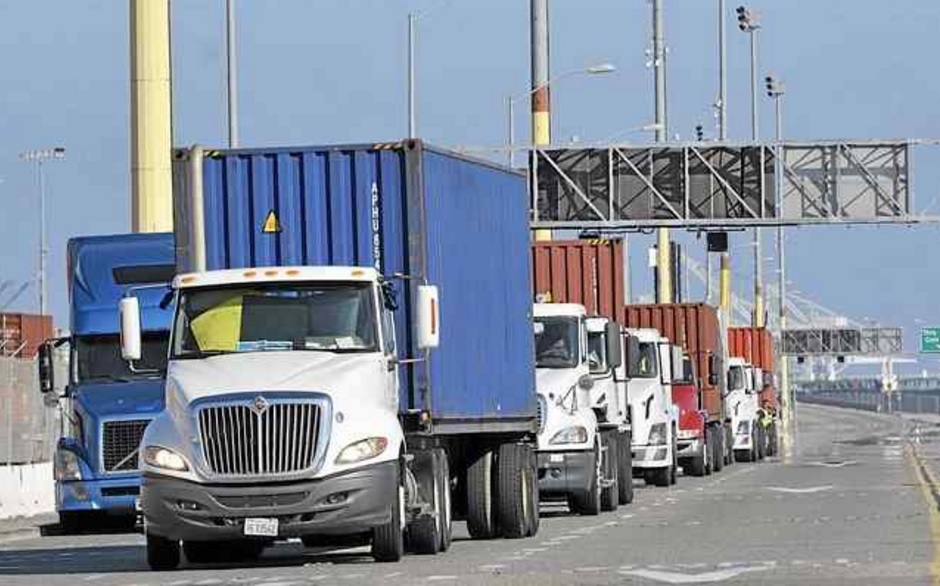
- How does the California Air Resources Board’s new Advanced Clean Fleets (ACF) rule differ from the Advanced Clean Trucks (ACT) rule?
The first one from 2020 (ACT) was targeted at vehicle manufactuers, and the new rule applies to fleets. ACT was aimed at manufacturers who certify Class 2b-8 chassis or complete vehicles with combustion engines who must sell zero-emission trucks as an increasing percentage of their annual state sales from 2024 to 2035. By 2035, zero emission trucks/chassis sales in California would need to be 55% of Class 2b – 3 truck sales, 75% of Class 4 – 8 straight truck sales, and 40% of truck tractor sales.
Under ACF, fleet owners will be on a longer track with their fleets. All new medium- and heavy-duty vehicles sold or registered in the state of California will be zero-emission by 2036. Existing vehcles will be able to continue operating through their useful life. For those operating vehicles for private services such as last-mile delivery and federal fleets such as the Postal Service, along with state and local government fleets, the transition will begin in 2024. Drayage trucks will need to reach zero-emissions by 2035. Last mile delivery and yard trucks must transition by 2035, work trucks and day cab tractors must be zero-emission by 2039, and sleeper cab tractors and specialty vehicles must be zero-emission by 2042.
2. Which technologies will be considered zero emissions?
Battery electric and hydrogen fuel cell medium-to-heavy-duty vehicles. Commercial trucks powered by renewable natural gas (RNG) and renewable diesel (RD) don’t fall directly under the zero-emission vehicle target. However, the CARB board did direct staff to coordinate with relevant state agencies on how non-fossil biomethane from sources related to the state’s wastewater and food waste diversion requirements under SB1383 can be used in hard-to-decarbonize sectors as part of the transition. They’ve asked them to report to the Board, by the end of 2025, any actions needed to accomplish the transition. CARB and other state and regional agencies encourage and incentive RNG and RD fleet usage. Using RNG is supported by CARB to reduce methane from organic wastes and other applications to help achieve California’s climate goals. In November, CARB approved amendments to the In-Use Off-Road Diesel-Fueled Fleets Regulation aimed at further reducing emissions from the off-road sector. It requires the use of R99 or R100 renewable diesel in off-road diesel vehicles.
3. What are some of the gains CARB has cited to set the new guidelines?
The new rule, ACF, will put California on a path toward accomplishing Gov. Gavin Newsom’s goal of fully transitioning the trucks that travel across the state to zero-emissions technology by 2045. While trucks represent only 6% of the vehicles on California’s roads, they account for over 35% of the state’s transportation generated nitrogen oxide emissions and a quarter of the state’s on-road greenhouse gas emissions, according to CARB. California communities that sit near trucking corridors and warehouse locations with heavy truck traffic have some of the worst air in the nation. Due to the impact that truck traffic has on residents living near heavily trafficked corridors, drayage trucks will need to be zero-emissions by 2035.
The new rule is expected by CARB to generate $26.6 billion in health savings from reduced asthma attacks, emergency room visits, and respiratory illnesses. For fleet operators concerned about cost containment, going this route will save an estimated $48 billion in their total operating costs from the transition through 2050. California is set to invest almost $3 billion between 2021 and 2025 in zero-emission trucks and infrastructure. This investment is a part of a $9 billion multi-year, multi-agency zero-emissions vehicle package to equitably decarbonize the transportation sector that was agreed upon by Governor Gavin Newsom and the legislature in 2021.
An analysis of the sales and purchase requirements by CARB estimates that about 1.7 million zero-emission trucks will be on California roads by 2050.
4. What about the infrastructure? What’s next?
For more than a decade, California has been making investments in infrastructure and to support the development and adoption of zero-emissions vehicles. The Joint Statement of Intent created the structure for collaboration between CARB, the California Energy Commission, the California State Transportation Agency, California Transportation Commission, California Department of Transportation, the Department of General Services, and the Governor’s Office of Economic and Business Development. These agencies will continue to plan, develop, deploy, and help to fund the extensive network of electric charging and hydrogen stations required to help get California to zero-emissions by 2045.
5. What does the market look like?
There are hundreds of models on the market in California now, with several of their builders making announcements at this year’s ACT Expo. They’re getting better for range and meeting most fleet applications, designed to meet their daily usage schedules. Volvo, Daimler Truck, and Volkswagen’s Traton are offering different-size battery electric models to logistics clients in Europe and the U.S. The list continues in medium-to-heavy duty offerings from PACCAR, Nikola, Navistar, Rivian, BYD, Freightliner, Mack Trucks, Peterbilt, Kenworth, Motiv Power Systems, and more.
GAM Market Intel: Why car ownership is going away gradually
What’s the best bet for urban mobility, reducing air pollution, making mobility safer, and less restricted by traffic? It may not be about car ownership. While car ownership and new and used vehicle sales have stayed high in the US, there are several indicators out there showing that a deep downward shift is well on its way. This is being driven by economic factors, concerns over traffic congestion and safety, air pollution, and climate change rules. Let’s start by taking a look at the pragmatic dollars and sense side of it, coming from the AAA annual report. The average annual cost of ownership in the US has gone up to $9,282 per year, a five percent increase over the the previous year.
Here’s the link to the latest edition of GAM Market Intel, and previous versions………



